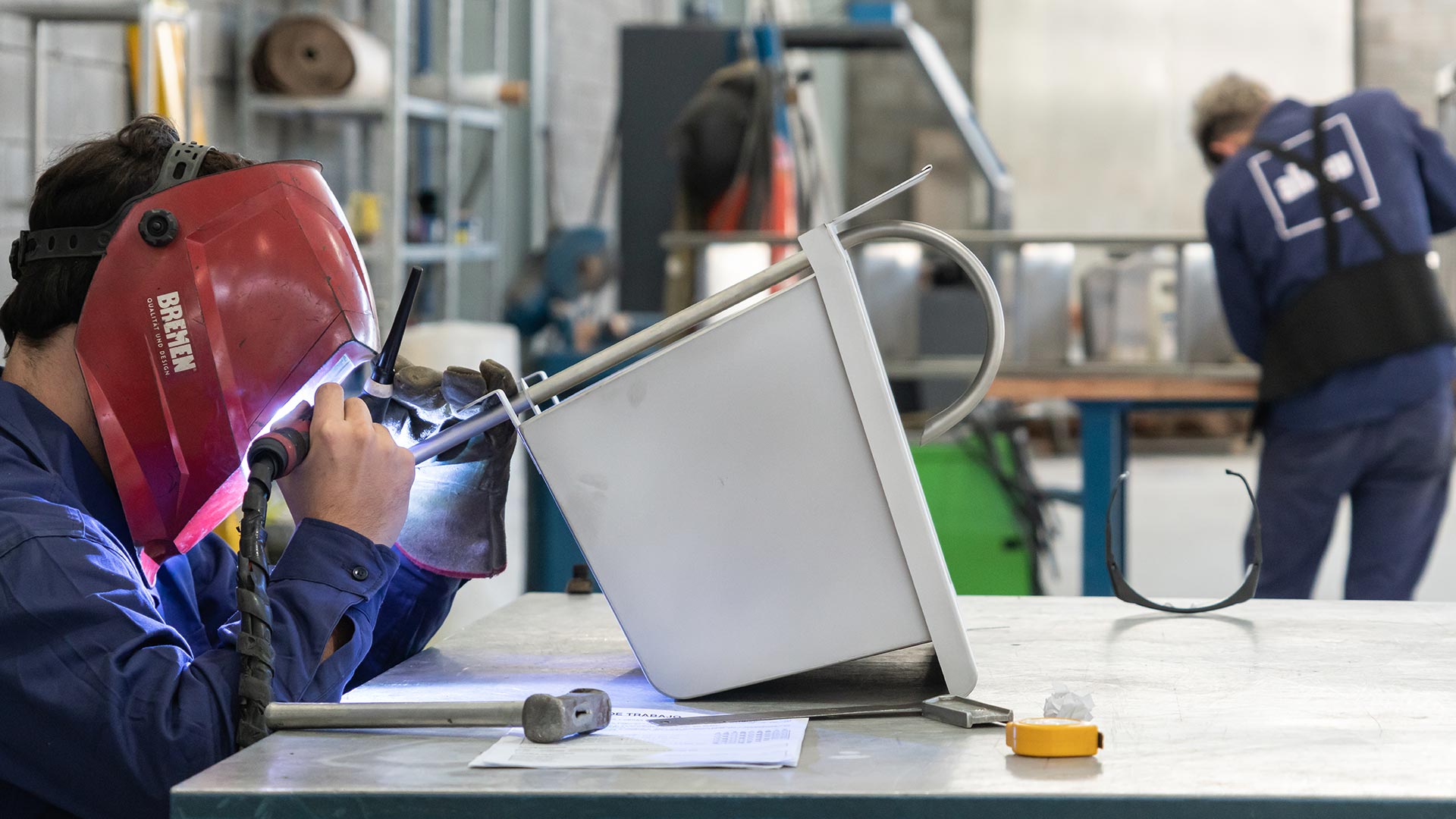Although in the manufacture of machinery for the food industry each of the processes are essential, both in the design and manufacturing stages, today we want to refer to the importance of welding, the different welding methods that exist and their benefits.
The food industry has very specific hygiene and safety requirements in terms of the procedures and equipment used. One of the most important aspects to take into account in the construction of food processing machines, in order to meet the demands of the industry, is welding. As we have commented in anothe note, stainless steel is the main raw material in the construction of this equipment due to its corrosion resistant properties, ease of cleaning and durability, among others. However, the quality of the weld can seriously affect food safety, as well as the efficiency and durability of the equipment.
A defective weld can enable the accumulation of bacteria and microorganisms in the welded areas, exposing the product to food contamination. Likewise, poor quality welding can weaken the structure of the equipment, making failures possible and increasing the risk of accidents.
Welding stainless steel requires a high level of skill and experience, so it is important to ensure that the welds are carried out correctly and that certain factors are taken into account that are decisive to guarantee their quality. Among these factors we consider essential the selection of qualified welders and the use of adequate materials, techniques and procedures. Once the welding has been carried out, it is essential to carry out inspections and quality tests on a regular basis, in order to ensure that they comply with the required standards and specifications.
The type of welding most commonly used with stainless steel in the food industry is TIG (Tungsten Inert Gas) welding, also known as tungsten electrode welding. It is one of the most precise and clean welding techniques available. A tungsten electrode and an electric current are used to generate an electric arc, which is used to melt the metal. This technique is ideal for welding thin stainless steel and for making precise fillet welds.
Today we also find laser welding, which has become increasingly popular in recent years due to its numerous advantages over traditional welding methods. This has proven to be an excellent choice for welding stainless steel due to its precision and ability to generate high temperatures in a very small area, allowing for fast and efficient welding.
For the manufacture of solutions where precision is essential, the laser beam, being very fine and concentrated, is ideal since it allows focusing on a very small and specific area, joining the pieces without deforming the metal and without the need for additional filler materials.
Furthermore, laser welding is a clean and safe process. It does not produce sparks or smoke, which reduces the risk of fire and allows for a safer work environment. It is also very energy efficient as the laser beam is only focused on the welding zone, reducing wasted energy and welding time.
Among the main advantages of laser welding we can list the following:
1. Greater precision and accuracy: The laser allows welding with precision and accuracy, which improves the quality and durability of the joints.
2. Quality control: The use of laser welding allows precise temperature control, producing a quality weld that meets the demands of the food industry.
3. Lower Costs: Laser welding is less expensive than electric welding, and also requires less material to use.
4. Less production time: The manufacturing time of a product is significantly reduced when laser welding is used, since the process is much faster.
5. Increased operator safety: Laser welding does not produce sparks or smoke, which means a safer work environment.
6. Greater resistance to heat: Laser welding is more resistant to heat than welding with electricity, giving greater durability to the joints and therefore to the products.
In general, the choice of the type of welding to be used depends on a variety of factors, such as the type of material, the quantity and thickness of the material to be welded, and the precision required in the work. It is important to carefully evaluate these factors before choosing a welding method to ensure successful welding.
